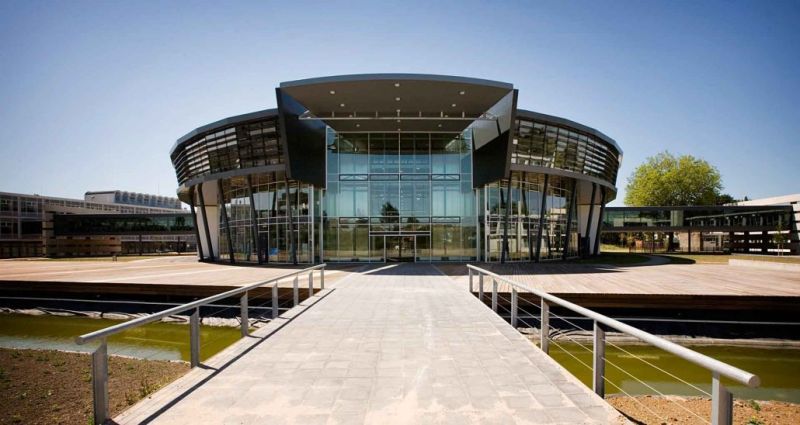Vista College does everything with Simulise

Vista College in Maastricht started using Simulise’s digital portfolio last year. Within the commercial MBO program, the portfolio is now being used as part of personalized learning. With a contemporary curriculum, the school aims to innovate and improve education. How did they handle that? How do you get a big change implemented, and what does the new way of teaching mean for teachers and students?
Gino Cramer is training manager and responsible for the education of about 350 students. ‘We want our education to remain relevant to students but also to employers. It is important for training to match the needs of the labor market. Because our students are their employees of the future! That’s why we not only work closely with companies, but also look at how we can design our education so that we prepare students for the job market in the best possible way.
Personalized learning
Leeuwenborgh therefore set to work on two key pillars: personalized learning and a contemporary curriculum. Gino Kramer: “That means we want to offer course material that is relevant now and in the future, while at the same time giving students the opportunity to pursue an individual pathway. After all, every student is different’. Leeuwenborgh then set to work on the physical learning environment: corners were set up everywhere where students could work quietly on their laptops by themselves. Teachers have been trained in new ways of teaching. “With our old-fashioned readers, stacks of printed paper, we could therefore no longer get by,” Cramer says. We needed something that would allow us to deliver the curriculum more dynamically and interactively.’
Theory and practice
Leeuwenborgh decided to organize the school day in a new way: a few hours of theory in the morning, the rest of the afternoon of practical education. This takes place across disciplines: ‘Just like in real life, within organizations and companies. There you are constantly working with different disciplines. It is also interesting for students: they are working on a project, for example the development of a service or product, but in the meantime they practice English, learn something about regional products and crafts but also marketing.’ The assignments for these projects are now offered and submitted in Simulise. Gino Cramer: ‘No more lugging thick readers around, but all assignments and lesson material always digitally accessible. This also has the advantage that we can add things in the meantime, such as YouTube videos with interesting explanations. the possibilities are endless.’
Students will be rewarded
A school may decide to offer education differently, but what do students think? At Leeuwenborgh, students are enthusiastic. “I am finally getting education again,” has even been said. ‘Yes, special,’ says Gino Cramer. ‘The students really have to work hard now, which took some getting used to. Their whole day is filled and they have to take responsibility for their own work. But you notice it’s good for them. They are given concrete assignments that are relevant to them and connect to real-world situations. They get small digital rewards all the time, which keeps them excited. They’re really in a nice flow’.
Preparing for skills
It is quite a big step to make such changes. How do you address that? Cramer: “It’s not like you just make the change overnight. We have invested in a mixed team that includes experienced teachers, young teachers and lateral entrants with field experience. This works well because they understand what the job market is waiting for. The culture within a school and a team is also important. There must be willingness to change and enthusiasm to work together on education. We really put a lot of effort into that and it’s paying off now.
Introduce step by step
Whatever tool you choose, a tool such as a digital portfolio is always a tool. Cramer ‘You cannot use Simulise to solve a particular problem. Your educational vision has to be in order first, the noses have to be in the same direction.’ That does not mean, by the way, that you have to have everything 100% worked out. Introducing changes step by step is an approachable way to start working with the portfolio and skills. And it ensures that you can make adjustments in time.
‘At Leeuwenborgh we are now the first to use the assignment function; , says Cramer. ‘Competencies like collaboration are already named in the portfolio, so we can link those to an assignment. So when students have to create a marketing plan, we measure right away how they actually work together. These are not drastic changes but they are a step in the right direction. It is important that the teaching is still somewhat recognizable, especially for teachers, and that there is not too big a change all at once.

